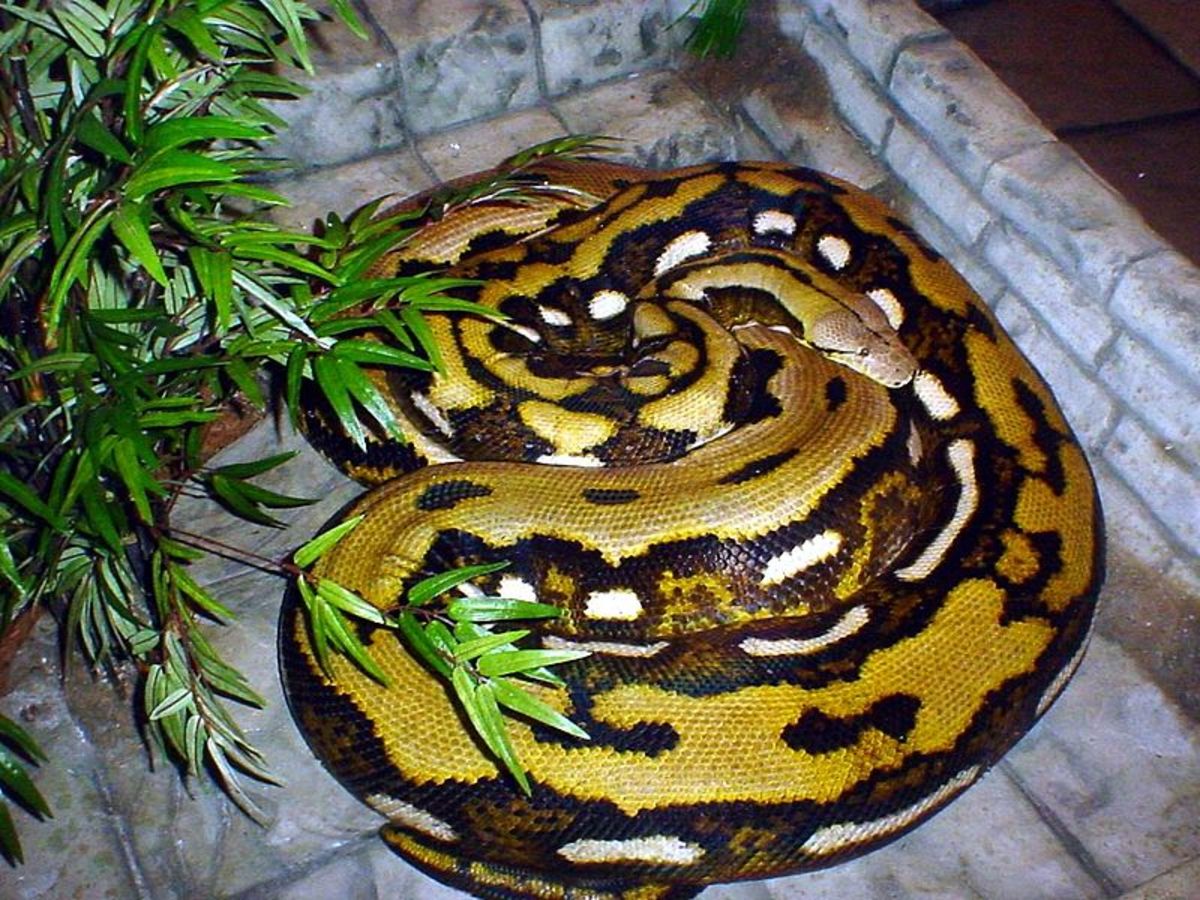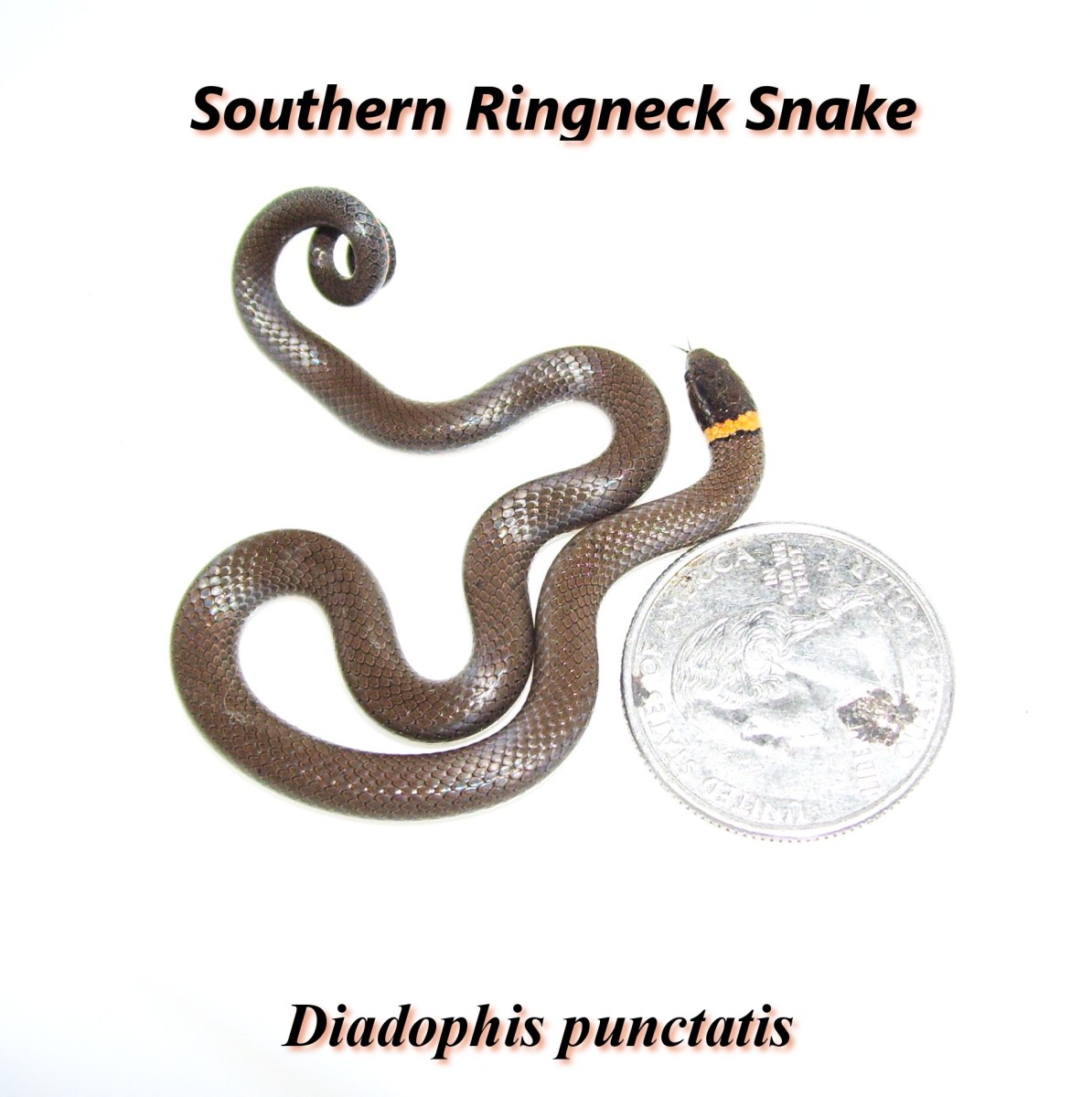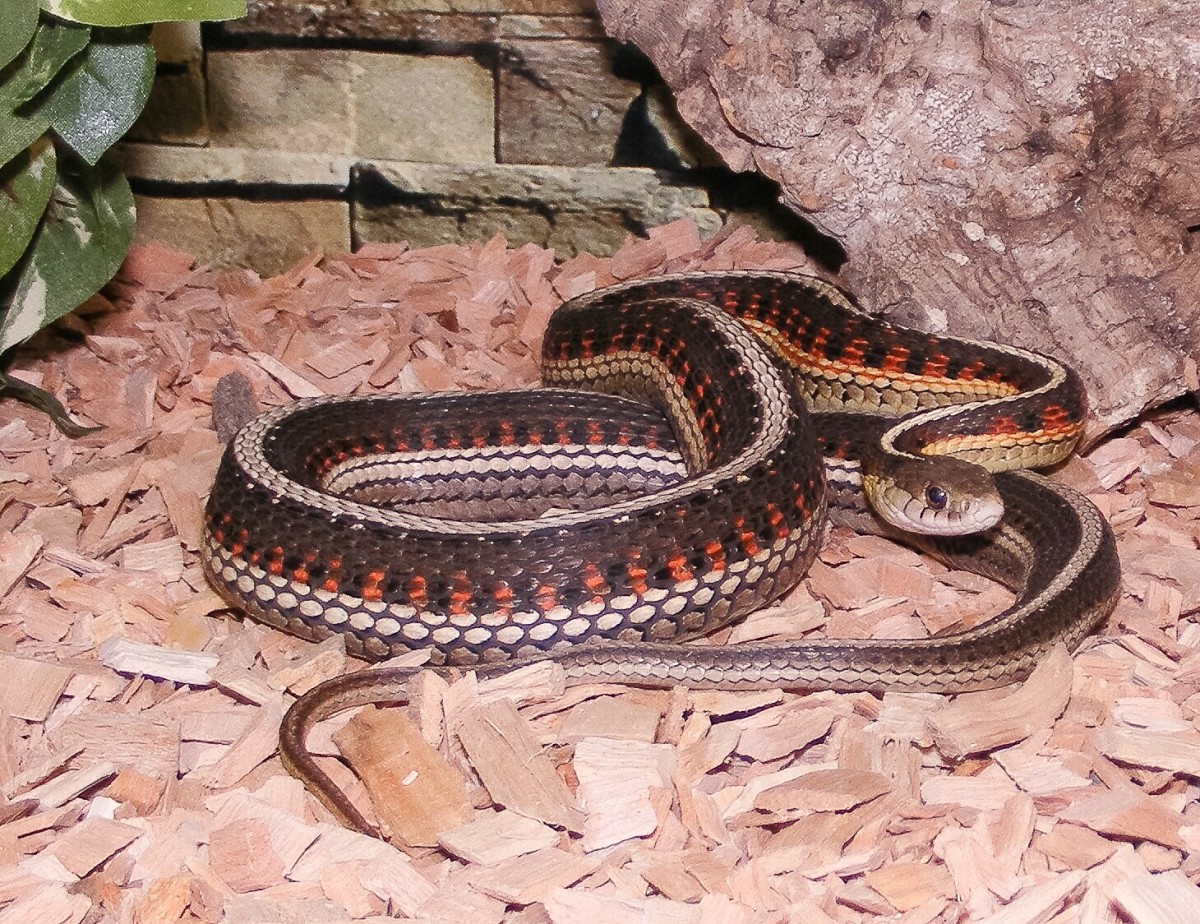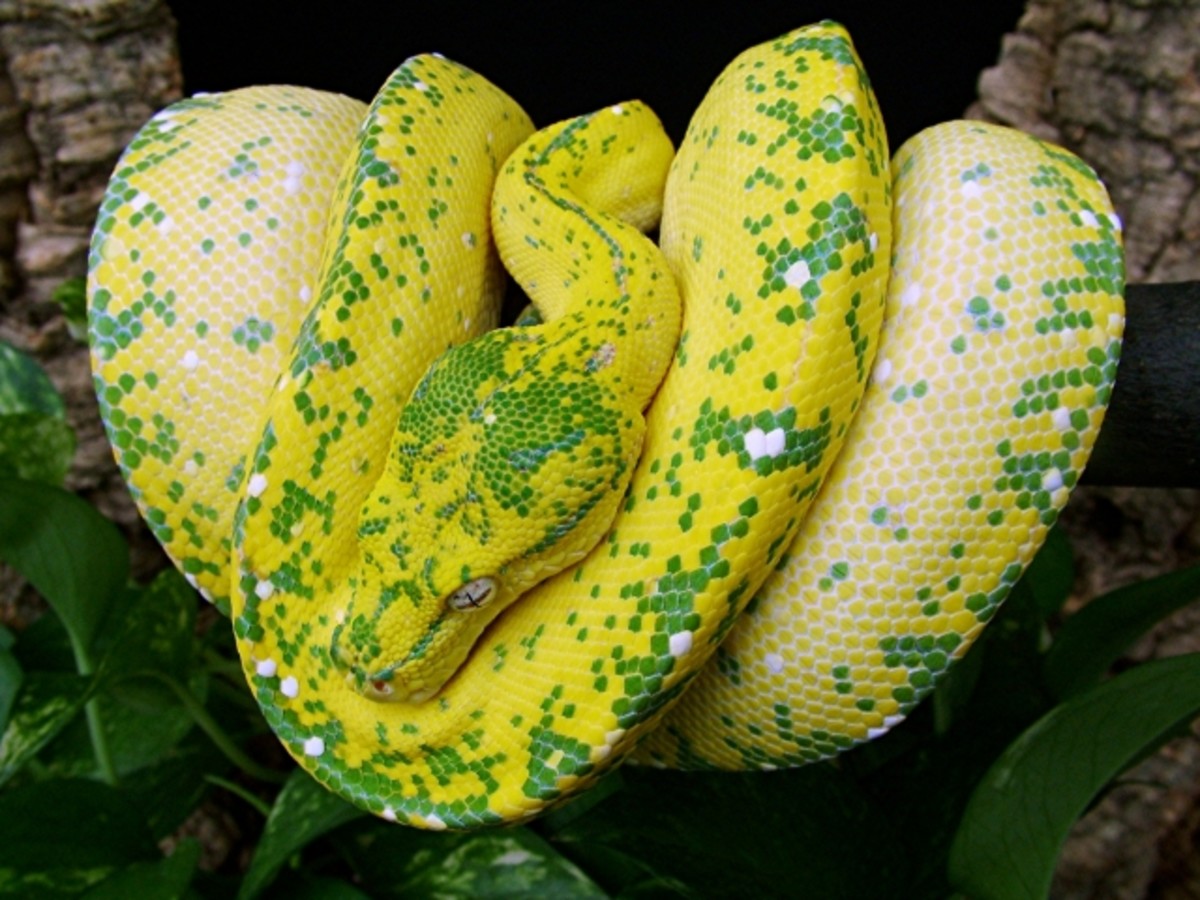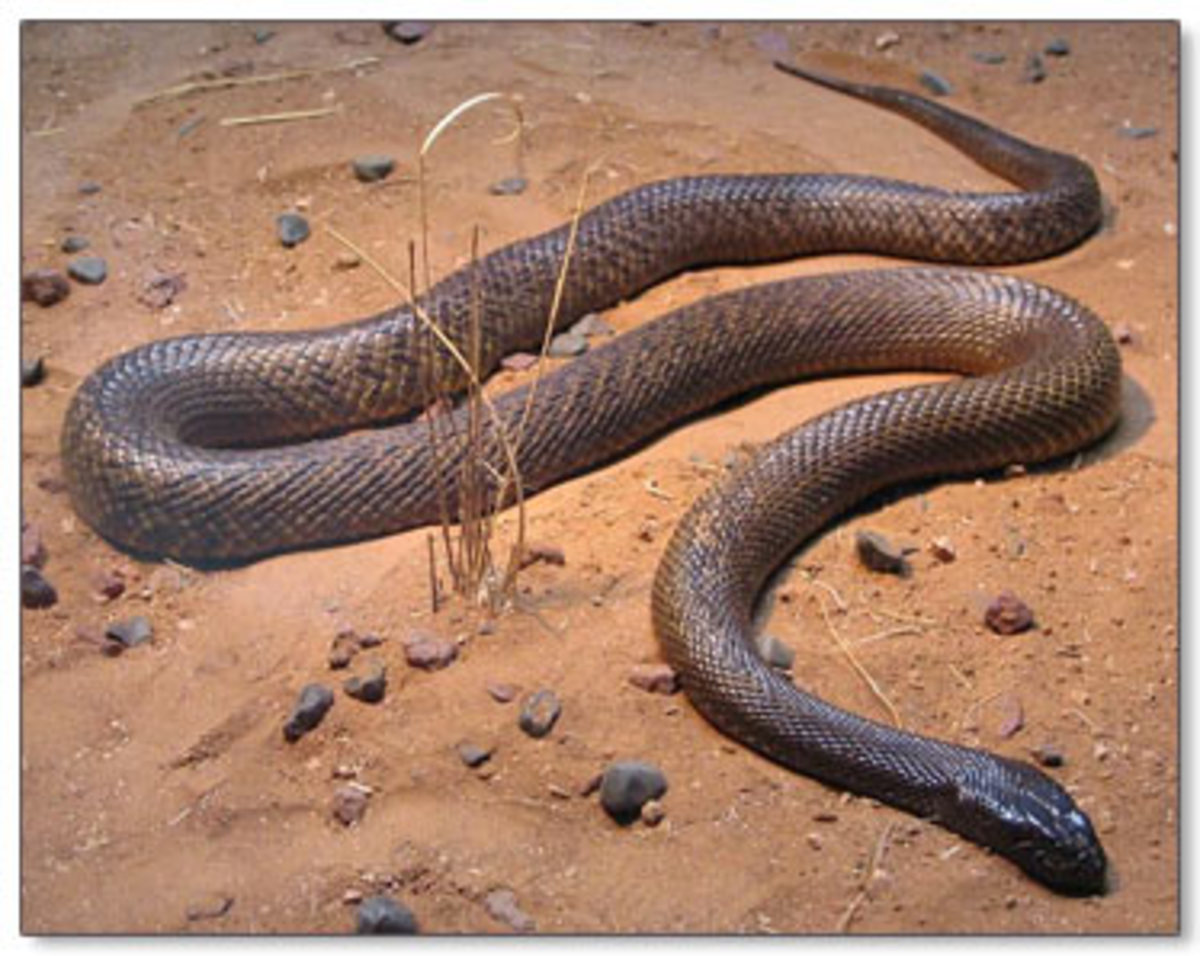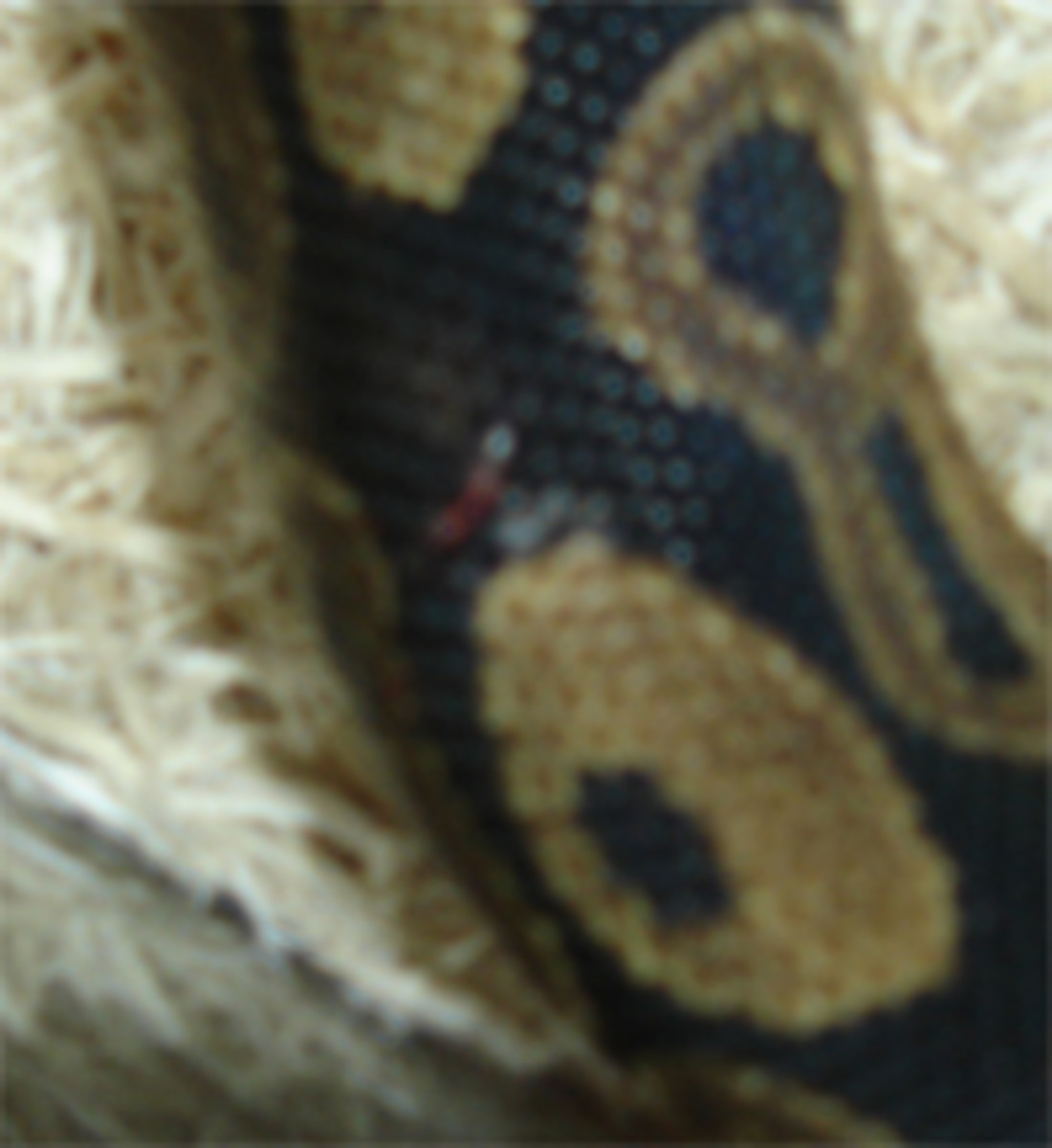My Snake Has Mites!
What are Mites?
Mites are tiny external parasites, and you never want to find mites on your snake. They suck the snake's blood and can transmit diseases. But, unfortunately, they are very common in captive snakes.
You can bring mites home several different ways, including:
- Bringing home a new snake.
- Going to a reptile show or event, or a petstore and playing with the snakes there.
- Bad batch of snake bedding, whether it be aspen or forest bedding.
But, more than likely, the number one cause of mites is introducing a new snake into your collection.
APPEARANCE:
Mites can look like small black beads on the snakes skin. A good indicator that your snake has mites would be tiny white flakes on the snake's body, which are usually mite feces. You can check your snake by running your hand down its body; then check your hand for crawing black dots or blood smears from squished mites.
Many times snakes with mites are found coiled in their water bowls, so dead mites can sometimes be seen floating in the water. Mites will hide in the corners of the snakes eyes, creating a slight lift in the eye rim.
Getting Rid of Reptile Mites
Mites are VERY hard to get rid of due to their rapid reproductive rates. But, if you notice that your snake has mites, or even think that you snake may have mites, it is fixable.
Place the snake in a separate enclosure with a lid, and spray the snake with an Ivermectin solution. Keep the snake in an isolation setup, so that it is easier to treat. You need to treat the snake every five days for a total of four treatments, just to make sure that all the mites are dead.
Other treatments include:
- Placing the snake in a well-ventilated container and putting pyrethrin-based flea powder on the snake.
- Overnight exposure to a section of insecticidal strip. (A 1 by 2" section of strip will treat snakes in a 20 gallon enclosure.) After 24 hours remove the strip, and in seven to ten days, repeat.
- Over the conter- commercial mite remedy such as Reptile Relief. Follow the directions on the bottle. Reptile Relief, among other mite remedies, can be purchased at most petstores.
You want to remember to remove EVERYTHING from the snake's normal enclosure. Throw out old bedding, sterilize any décor (be careful to get ALL nooks and crannies), and thoroughly clean the enclosure itself.
To make sure that you have killed all the mites in the enclosure, to include all crevices in the décor, remove the snake and the bedding from the cage, leaving the décor. Place a large piece of insecticide stripe in the cage, and seal the top with a plastic sheeting. Be careful to tape it completely shut. Leave it alone for at least three days, allowing the miticide to reach all small cracks and crevices. Repeat this twice every ten days. Remember to still wipe the outside of the cage with a mite remedy solution.
And, because mites can travel in and out of a cage at will, you will want to wipe down the area around the cage with a cleaning solution such as Windex.

How to Prevent Reptile Mites
Don't get mites to begin with.
Your best bet when bringing a new snake home is to quarantine the new snake away from existing snakes.
You really don't want to house multiple snakes in the same enclosure, ESPECIALLY if you're bringing home a new snake to put with an existing one. By quarantining the new snake, you can watch for other signs of illness as well. The minimum quarantine time should be no less that seven to fourteen days.
Disclaimer: Please be aware that the advice in this article should in no way replace that of a licensed veterinarian. The methods outlined above may or may not work for your pet. If you have any concerns, you should consult a specialized reptile veterinarian.


